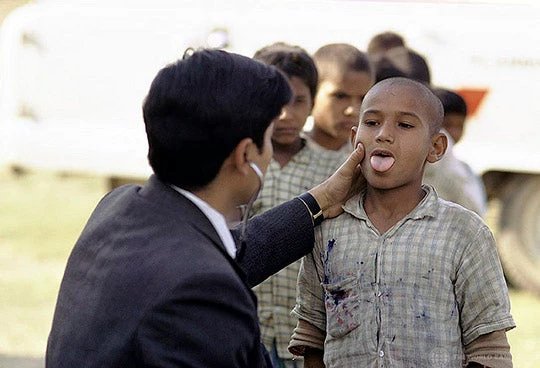More than 1.5 billion people today reside in countries affected by violence and conflict, most - if not all - of which also suffer from inadequate and poor access to basic services. By 2030, it is estimated that about 40 percent of the world’s poor will be living in such environments, where each consecutive year of organized violence will continue to slow down poverty reduction by nearly one percentage point.
A large portion of this group presently resides in conflict-affected parts of South Asia, a region that is home to 24 percent of the world’s population and about half the world’s poor.
Despite such challenging circumstances, research shows that in many settings, development aid is indeed working - albeit with frustrating inconsistency.
The 2011 World Development Report recognizes the strong link between security and development outcomes in fragile and conflict-affected contexts. However, what the evidence is yet to show us is how exactly do you get the job done right?
While it is true that there are no ‘magic bullet’ solutions towards ensuring effective delivery results in conflict settings, it cannot be denied that some interventions do indeed do better than others. And the study specifically examines these interventions.
We will produce three country case study reports and one final volume that combine a global literature review with the case study material in order to extract the major knowledge, policy and operational implications. Our goal is to enhance design of future service delivery projects in conflict contexts.
Once our research is completed, we hope to shed light on the following critical questions:
Why is it that some development programs are more successful in achieving targeted results in conflict-affected settings than others?
Results show that Nepal is one of the few countries to achieve positive health outcomes in programming implemented during the peak years and in the immediate aftermath of the Maoist insurgency. However, other health programs initiated in Afghanistan and Pakistan faced greater roadblocks to success. Our study will focus on exploring dynamics and processes that can support the success of such service delivery in conflict-affected contexts to better inform the design of similar interventions.
How do you achieve better service delivery results in conflict-affected contexts while doing no harm and laying the foundation for improving long-term institutional capacity?
We hope to answer this by examining World Bank-supported service delivery interventions in the health, education and infrastructure sectors in Afghanistan, Pakistan, and Nepal to better understand the ‘how to’ of service delivery implementation in these conflict-affected areas. The “how to” will look into drivers of conflict, formal and informal institutions, political settlements and public expectations.
What lessons can we learn from past operational experiences that have proven to be successful in achieving pro-poor service delivery outcomes?
We want to identify practical implications and lessons learned on not only how to promote better development outcomes, but also how to contribute towards the broader objectives of helping (re) develop the state’s capacity to serve its citizens.
Service delivery, if done right by the donor community and is well designed for the targeted conflict context, can improve the capacity of weaker governments to deliver on its promises and rebuild state-citizen relations, thus improving public trust, state legitimacy and creating prospects for long term peace and economic growth.



Join the Conversation